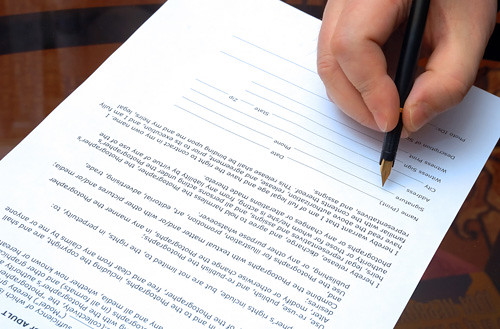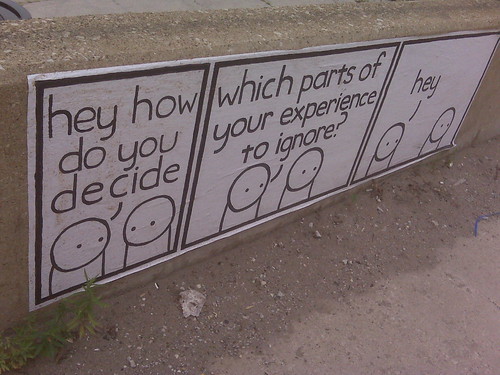 I’ve been following a discussion online about school Acceptable Use Policies for using computers. AUPs are documents that many schools get students to sign which outline the rules for using the computers. Students – sometimes quite young students – then have to sign it like a contract, a sort of in-writing promise that they won’t do the wrong thing; visit banned websites, try to hack the system, abuse the equipment, etc . The contracts are usually enforced by people who rarely read the Terms of Service on the websites they visit themselves.
I’ve been following a discussion online about school Acceptable Use Policies for using computers. AUPs are documents that many schools get students to sign which outline the rules for using the computers. Students – sometimes quite young students – then have to sign it like a contract, a sort of in-writing promise that they won’t do the wrong thing; visit banned websites, try to hack the system, abuse the equipment, etc . The contracts are usually enforced by people who rarely read the Terms of Service on the websites they visit themselves.
My own personal view is that getting kids to sign a document saying they will do the right thing is rarely responsible for actually getting them to do the right thing. The best you can hope to achieve with an AUP-style document is the chance to wave it in their face when they do the wrong thing… but really, what positive thing has that achieved other than the opportunity to lord over them about the error of their ways? (Unless you consider creating a culture of mistrust a positive thing)
On the other hand, if all you really want to achieve with the AUP is to make sure that every kid knows what the rules and expectations are, then there are plenty of more effective ways to do that than having them sign some quasi-legal document invented by the school (or more commonly, copied from another school).
There are lots of rules and expectations in schools that kids “just know” because it’s just part of the culture and “the way we do things around here”. Most of those don’t need to be enshrined in some sort of unenforceable contract. Computer Use AUPs are about as effective as Lineup Neatly in the Cafeteria AUPs, Do Your Homework AUPs and Keep Your Shoelaces Tied AUPs. There are rules, customs and expectations about all these things, but we don’t seem to feel the need to have a contract for all of them. Why is Using A Computer so different.?
I think Computer Use AUPs harken back to the old days when going to the computer room was a big deal, and computers were so rare that we needed special rules about using them. I’d like to think we’ve moved on a little since then…
Image: ‘Panama Real Estate – Contracts‘
http://www.flickr.com/photos/23065375@N05/2235529638

 I was following a discussion on a mailing list today about the various internet blocking and filtering policies that different schools implement. Someone said their school was revising their fitering/blocking policy and wanted to know what others were doing. From the replies I saw, it seems that many schools are still running scared of what their kids might do on the web, and still block access to useful services like YouTube and Flickr, and pretent things like Facebook and Twitter don’t exist. Seems that even after 10 years, Web 2.0 is still a scary bogieman to many schools.
I was following a discussion on a mailing list today about the various internet blocking and filtering policies that different schools implement. Someone said their school was revising their fitering/blocking policy and wanted to know what others were doing. From the replies I saw, it seems that many schools are still running scared of what their kids might do on the web, and still block access to useful services like YouTube and Flickr, and pretent things like Facebook and Twitter don’t exist. Seems that even after 10 years, Web 2.0 is still a scary bogieman to many schools.